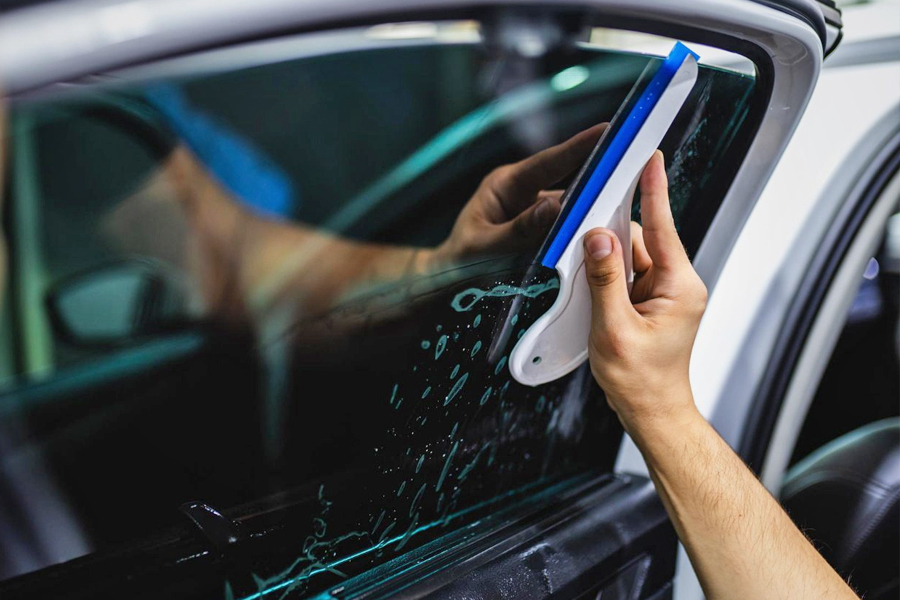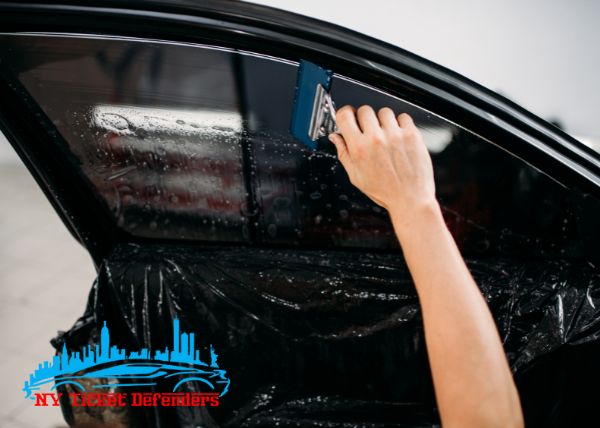Discover the Benefits of UV Protection with Car Window Tinting
Discover the Benefits of UV Protection with Car Window Tinting
Blog Article
Home Window Tinting Rules and Guidelines: What You Required to Know Before Tinting Your Car
Before continuing with window tinting for your car, it is vital to acquaint yourself with the varied regulations and guidelines that govern this technique across various states. These guidelines determine the allowable levels of color darkness, usually gauged by noticeable light transmission (VLT) percentages, and consist of specific terms for front windshields aimed at ensuring roadway safety and security. In addition, particular jurisdictions might use medical exceptions for people with qualifying conditions. Understanding these intricacies can save you from potential lawful implications, but what are the specific rules in your state?
Summary of Window Tinting Regulations
Window tinting regulations are regularly subject to variant across various jurisdictions, reflecting local policies and safety and security factors to consider. These regulations dictate the acceptable levels of color darkness and reflectiveness on automobile windows, making sure that drivers preserve adequate presence while likewise securing versus damaging UV rays and warm.
Most policies categorize home window tinting based on the Visible Light Transmission (VLT) percent, which shows the amount of light that can go through the home window. Normally, reduced VLT percents symbolize darker colors. Legislations usually distinguish in between the front, side, and back windows, with stricter constraints put on the front windscreen to boost security for both the driver and other road individuals.
In addition, some territories impose constraints on the reflectivity of the color, preventing too much glow that might hinder exposure. Exceptions to these regulations might exist for people with certain medical conditions needing additional sun defense. Conformity with home window tinting laws is critical, as infractions can lead to penalties, obligatory removal of the color, and potential boosts in insurance premiums. It is important for automobile proprietors to acquaint themselves with regional regulations before continuing with window tinting installations.
State-by-State Tint Regulations
Understanding the particular home window tinting guidelines in each state is important for lorry owners seeking to abide by the legislation. Each state in the united state has developed its very own set of policies controling window tinting, which can differ considerably. These policies usually dictate the permitted levels of tint darkness, the sorts of windows that can be tinted, and any kind of medical exemptions that might apply.
As an example, states like California have stringent constraints on tint darkness for front windows, while others, such as New Mexico, may enable darker tints. Furthermore, particular states mandate certain presence percentages for different windows, including the windscreen, front side home windows, and back home windows. It is critical for automobile proprietors to acquaint themselves with their state's legislations to stay clear of potential fines or penalties.
Additionally, some states might call for a certification sticker to be positioned on tinted windows, suggesting compliance with state laws. Failure to comply with these laws not just risks lawful effects but can likewise influence safety and visibility while driving. For that reason, lorry proprietors should perform extensive research study or get in touch with regional authorities to guarantee full understanding and compliance with state-by-state tint policies.
Allowed Tint Kinds and levels
Numerous automobile proprietors may be shocked to discover that allowed color levels and types differ extensively across various states. Each state has actually established its very own regulations regarding the acceptable darkness and reflectivity of home window tint, often measured by Visible Light Transmission (VLT) percentages. VLT describes the amount of light that can travel through the tinted home windows; therefore, a lower percentage shows a darker tint.

Moreover, the kinds of color products permitted can differ, with some states prohibiting metallic or mirror-like surfaces. It is important for automobile proprietors to familiarize themselves with their state's particular regulations to make certain conformity. Non-compliance can lead to penalties, mandatory removal of the tint, or other legal consequences, making it vital to comprehend these policies prior to continuing with setup.
Medical Exemptions for Tinting
While not all states supply allocations for clinical exemptions pertaining to window tinting, those that do recognize the need for particular individuals to boost visibility and comfort because of clinical problems. Numerous clinical conditions, such as lupus, skin cancer, and certain eye problems, can provide individuals particularly conscious sunlight. Consequently, these individuals may need darker tints to protect themselves from hazardous UV rays and glow.

It is necessary to note that despite a medical exception, there may still be constraints on the level of color enabled. Conformity with state regulations guarantees that people are both protected and within lawful limitations. Those considering medical exemptions need to call their local Department of Electric motor Automobiles or comparable authority to understand the requirements and treatments essential to look for an exception successfully.
Charges for Non-Compliance
Falling short to abide with window tinting regulations can cause significant fines, which vary by state. Law enforcement companies are equipped to release citations for lorries that do not stick to the specified tinting laws. These charges typically consist of fines, which can vary from modest amounts to several hundred bucks, depending useful site upon the seriousness of the violation and the state concerned.
In some territories, repeated offenses might lead to rising fines or added charges, such as necessary court looks. Non-compliance might demand the elimination of illegal tinting, often at the proprietor's expense. In extreme cases, regular transgressors might deal with suspension of their car registration up until compliance is attained.
In addition, insurance effects may emerge from receiving multiple citations for home window color infractions. Insurance companies may check out such offenses as an indication of riskier habits, possibly resulting in increased costs or trouble in insurance coverage.
To stay clear of these fines, it is essential for lorry owners to familiarize themselves with their neighborhood window tinting legislations and ensure that their lorry complies (Window Tinting). This proactive strategy not just prevents lawful ramifications but also promotes road security
Verdict

Most regulations classify window tinting based on the Visible Light Transmission (VLT) portion, which indicates the quantity of light that can pass through the window. Compliance with window tinting guidelines is important, as violations can result in penalties, compulsory elimination of the color, and potential increases in insurance policy premiums.Comprehending the specific window tinting regulations in each state is crucial for automobile owners seeking to conform with the law. These guidelines frequently determine the permitted levels of color darkness, the kinds of home windows that can be tinted, and any type of clinical exceptions that might use.
For circumstances, states like California have rigid constraints on tint darkness for front windows, while others, such as New Mexico, might enable darker tints.
Report this page